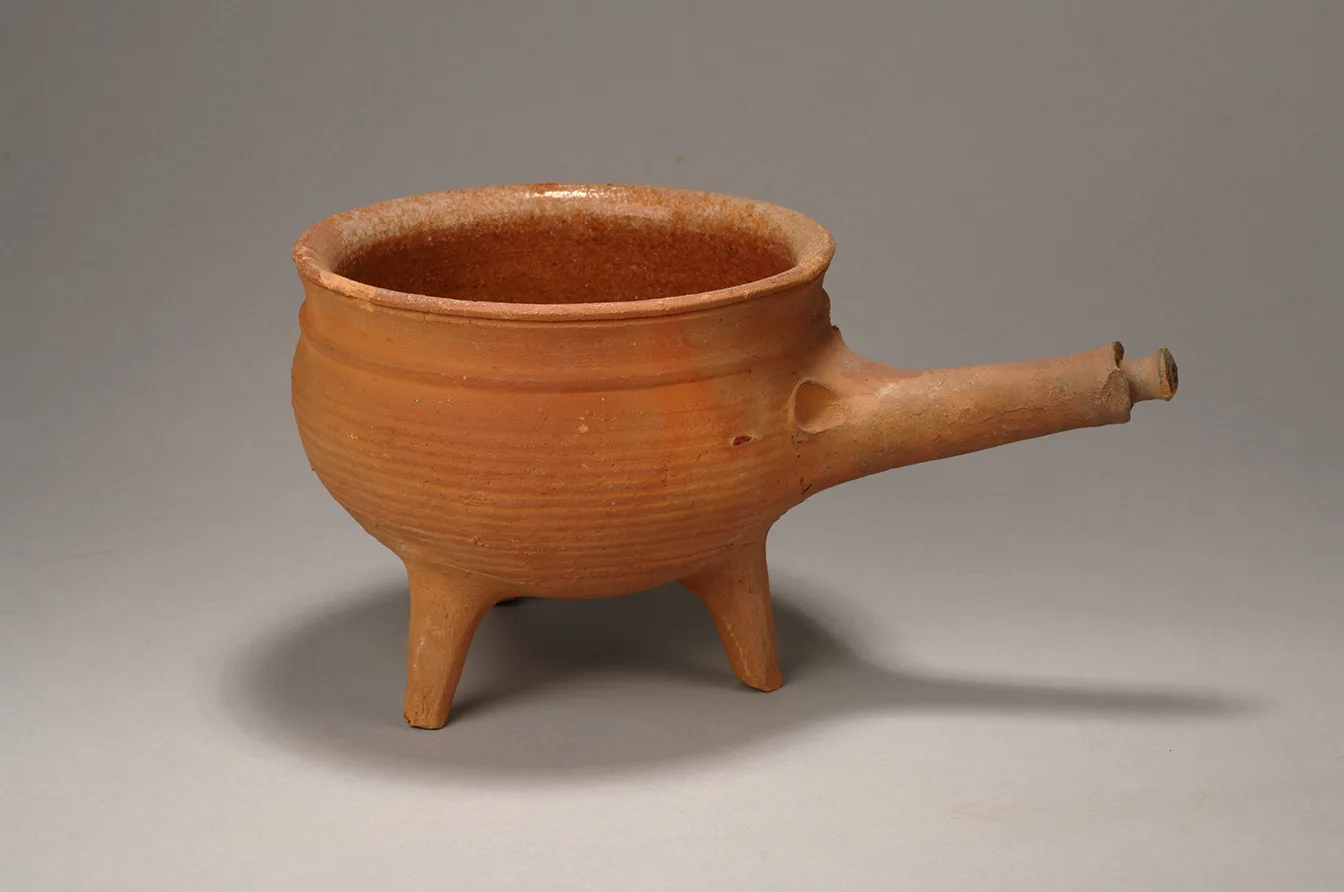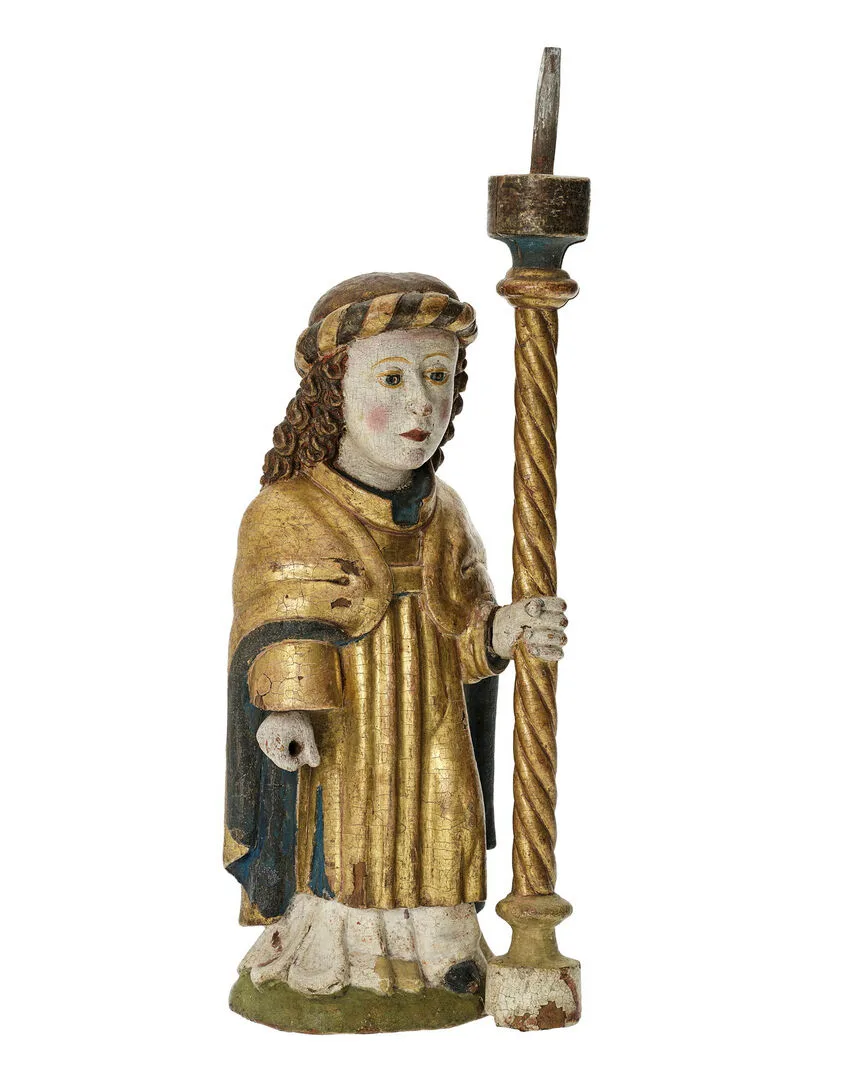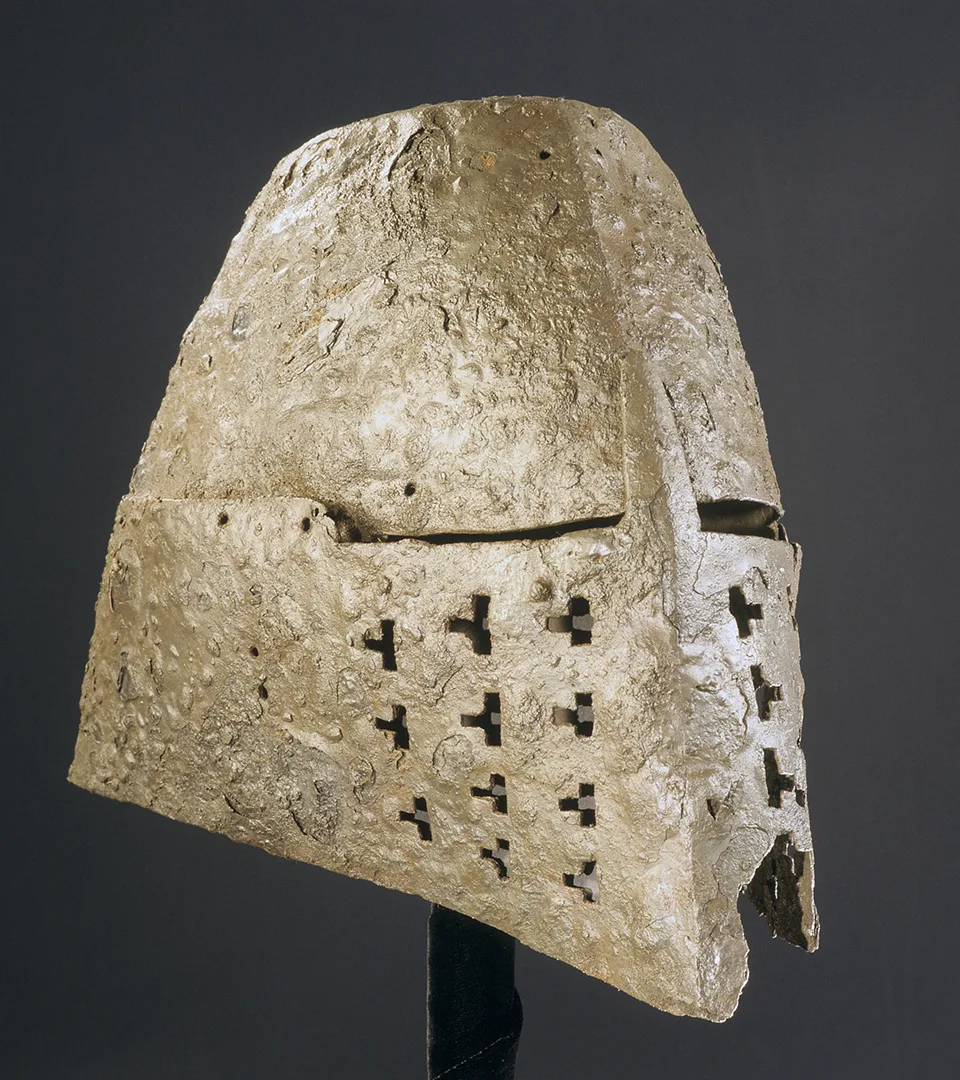A medieval shoe
Leather shoe from the Middle Ages, in the collections of the Swedish History Museum (CC BY 4.0).
This leather shoe with laces was used about 600 years ago during the Middle Ages. Shoes like this were common then and worn by both children and adults. Leather shoes were useful for protecting the feet from cold, rain and mud. It’s common for archaeologists to find remains of shoes when they excavate old towns. They were often patched and repaired many times, showing that shoes were valuable and worth taking care of.

Leather shoe
Original object that has been 3D-scanned.
Digitisation in 3D
The Swedish History Museum is part of the government agency National Historical Museums. The organisation is constantly working to digitise its collections. One example of this work is the creation of 3D models of some of the museum’s objects.
How is a 3D model made?
A photographer takes a large number of still photos of an object from different angles. These images are then processed by computer software to create a digital version of the object – a 3D model. This technique is called photogrammetry or Structure from Motion (SfM).
In this way, 3D models of objects from the museum’s collections are continuously being created. The models are made available on the platform Sketchfab.com, where you can view, download and freely reuse them under an open licence. Have you used our 3D models to create something you’d like to share with us? Or would you like to get in touch with the department responsible for the 3D models? Feel free to email: bilder@shm.se





